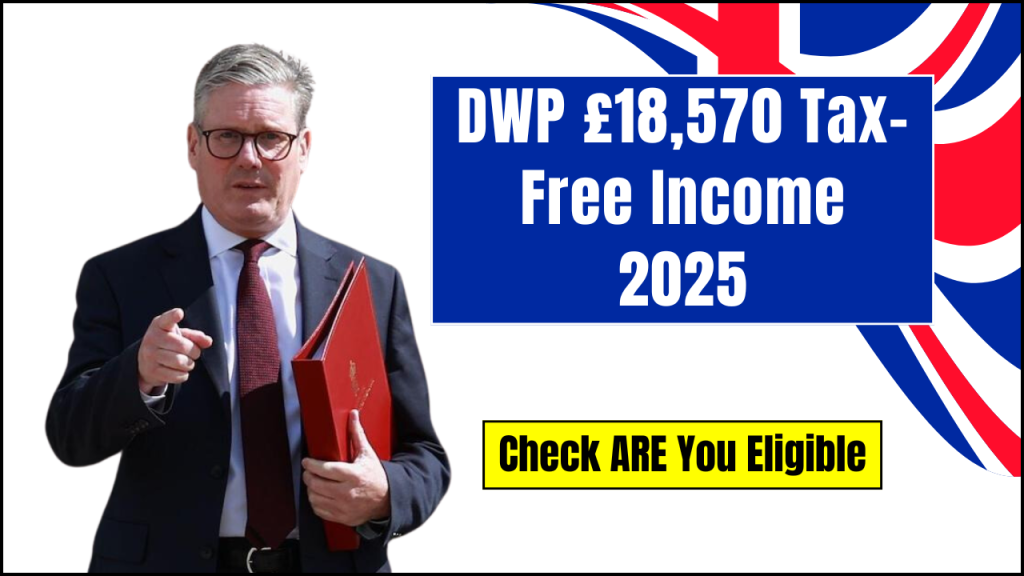
Many UK residents are unaware that they can earn up to £18,570 without paying any income tax in the 2025/26 tax year. This isn’t a special payment or scheme from the Department for Work and Pensions (DWP), but rather a combination of three existing tax allowances that, when used strategically, can significantly reduce your tax burden.
The DWP is a key government department responsible for welfare, pensions, and other social security benefits in the United Kingdom. While they don’t directly administer these tax allowances (that’s HMRC’s role), understanding these opportunities is particularly relevant for those receiving DWP benefits or pensions.
Understanding the Three Key Allowances
Personal Allowance: Your First £12,570
The Personal Allowance is the foundation of tax-free income in the UK. Every eligible resident can earn up to £12,570 before paying any income tax. This applies to various income sources including:
- Employment earnings
- Pension income
- Rental property income
- Some state benefits
This allowance is automatic for most people and reflected in your tax code. If your total annual income falls below this threshold, you won’t pay any income tax at all.
Starting Rate for Savings: Up to £5,000
The Starting Rate for Savings is less well-known but potentially very valuable. It allows you to earn up to £5,000 in interest from savings completely tax-free, but with important conditions:
- It only applies if your non-savings income (wages, pension, etc.) is below the Personal Allowance of £12,570
- For every £1 you earn above the Personal Allowance, your Starting Rate allowance decreases by £1
- It specifically applies to savings interest, not dividends or other investment income
This allowance is particularly beneficial for those with low earnings but substantial savings.
UK £250 Cost of Living Payment Arriving in April 2025, How to Check if You Qualify
Personal Savings Allowance: Up to £1,000
The Personal Savings Allowance (PSA) provides additional tax relief on savings interest. The amount depends on your overall tax bracket:
- Basic-rate taxpayers (20%): £1,000 tax-free interest
- Higher-rate taxpayers (40%): £500 tax-free interest
- Additional-rate taxpayers (45%): No allowance
This allowance applies regardless of your other income sources, making it a valuable addition to the other tax-free allowances.
Eligibility for the Full £18,570 Tax-Free Amount
To benefit from the maximum tax-free amount, you need to meet specific criteria:
| Requirement | Details |
|---|---|
| Residency | UK tax resident |
| Non-savings income | £12,570 or less annually |
| Savings interest | Have interest-generating savings |
| Tax bracket | Basic-rate taxpayer |
Those most likely to benefit include:
- Pensioners with significant savings
- Part-time workers
- Freelancers with variable income
- Students with inheritance or savings
- Anyone splitting their income between earnings and savings interest
Different Perspectives on Tax-Free Income
For Retirees
Retirees often have the ideal income mix to maximize these allowances. With state pension payments typically below the Personal Allowance and potentially decades of accumulated savings, many can structure their finances to keep significant portions of their income tax-free.
For example, a retiree with an £11,000 annual pension and savings generating £7,000 in interest could receive £18,000 completely tax-free (using all three allowances).
For Working-Age Adults
Working adults typically have higher employment income, which may reduce the Starting Rate for Savings allowance. However, couples where one person works part-time or stays home can strategically allocate savings to maximize the family’s tax-free potential.
Additionally, using ISAs (Individual Savings Accounts) alongside these allowances can further increase tax efficiency.
For Low-Income Households
For those on lower incomes, these allowances effectively remove them from income tax liability altogether. This provides crucial financial breathing room and makes the tax system more progressive for those with limited means.
Practical Strategies to Maximize Tax-Free Income
- Track Income Sources Carefully: Separate non-savings income from savings income to accurately calculate your allowances.
- Use ISAs Strategically: Any interest earned in ISAs doesn’t count toward your Personal Savings Allowance, effectively giving you additional tax-free earning potential.
- Plan as a Couple: Married couples or civil partners can potentially double their tax-free amount to £37,140 by allocating savings and income efficiently between both partners.
- Consider Timing of Income: If possible, spread interest payments across tax years to maximize allowance usage.
- Utilize HMRC Tools: The online Income Tax Calculator can help you understand your tax position and optimize accordingly.
Looking Ahead
The opportunity to earn up to £18,570 tax-free represents a significant benefit built into the UK tax system. While it’s most accessible to those with lower earnings and higher savings, understanding how these three allowances interact can help almost any taxpayer improve their tax efficiency.
Rather than a special scheme requiring application, these are standard allowances that many people simply aren’t utilizing fully. By understanding and planning around these allowances, UK residents can legally keep more of their money while fully complying with tax regulations.
For personalized advice on your specific situation, consulting a qualified financial adviser can help ensure you’re making the most of all available tax advantages.